How To Befriend Your Customers And Talk Their Language
Starbucks.
A place where customers hang out often and grab their lattes and mochas frequently from the store outlets.
Why do they prefer paying quite a price for Starbucks coffee so frequently while it can be made at home?
Unlike certain products that cater to a premium class of customers or some that make products affordable for all, Starbucks is not about who can afford their products.
They chased the experiences and emotions, instead.
Think about it.
The aromatic coffee breeze that hits you while walking past the store, the cozy ambiance for you to work while having a bite of sandwich, and personalized coffee cups with your names written on it.
Starbucks is about making its customers happy – a price anyone is willing to pay and an emotion everyone wants to feel.
When people look at brands as having a connection beyond just plain business transactions, magic can happen.
This largely depends on the values your company is built on and bridging the gap between how you want your customers to perceive you and how they actually do.
With emotion as a powerful tool vested in us, in this article, we’ll be seeing how you can tap into customers’ emotions for marketing success.
What is emotional marketing?
Emotional marketing is a technique used by marketers to make customers feel a certain emotion and get the desired response. Depending on your objectives, you can appeal to the emotions of your customers through different forms- content, colors, campaigns, customer data, and more.
Hubspot defines it as:
Marketing and advertising efforts that primarily use emotion to make your audience notice, remember, share, and buy. Emotional marketing typically taps into a singular emotion, like happiness, sadness, anger, or fear, to elicit a consumer response.
Before we jump into how this can be achieved, let’s first understand the types of emotional triggers in marketing.
What are the types of emotional triggers?
Psychologist Robert Plutchik created the Plutchik wheel of emotions that identifies 8 primary emotions – anger, anticipation, joy, trust, fear, surprise, sadness, and disgust.
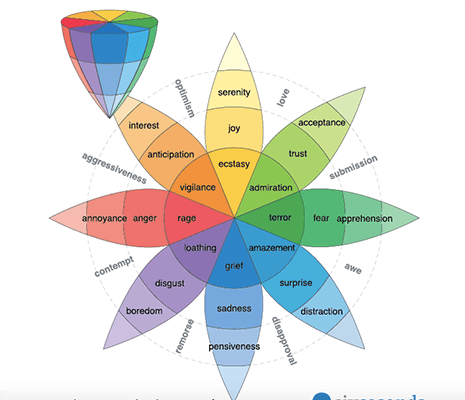
How do these emotions play a role in your marketing efforts?
Anger as an emotional trigger
Anger is a negative emotion that you don’t want your customers to feel about your brand as it can have a negative impact and tarnish the overall image of your brand.
When Pinterest did a wedding campaign based on the browsing history of their users, it went terribly wrong and triggered anger among its customers. They’d used the data of the customers who searched for photos of wedding dresses, cakes, and wedding photos. Pinterest took this as a signal and planned an email campaign congratulating their users on their wedding assuming that they were getting married.
They failed to validate the marital status of the customers and did not make the effort to find out whether or not they are planning to get married.
This campaign annoyed customers who took on to Twitter with rage tweets.
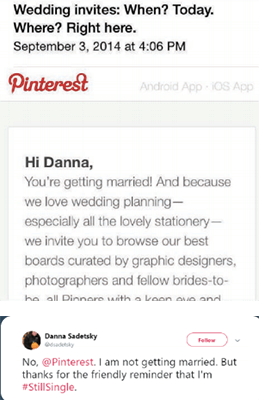
But, anger need not necessarily have a negative connotation. You can use this emotion to catch attention and send a message like how the Always Like a Girl campaign did. It triggered anger with stereotypical responses but ended up with a beautiful and impactful message.
Key takeaway: So, the key takeaway here is that, when anger is used right it can help you launch successful campaigns. Also, campaigns that are planned without proper research and that are based on pure assumptions can trigger anger among customers that can ruin your brand image once and for all.
Anticipation as an emotional trigger
To understand how to make your customer excited, there’s no better example than Apple. The trillion-dollar company knows how to get people excited.
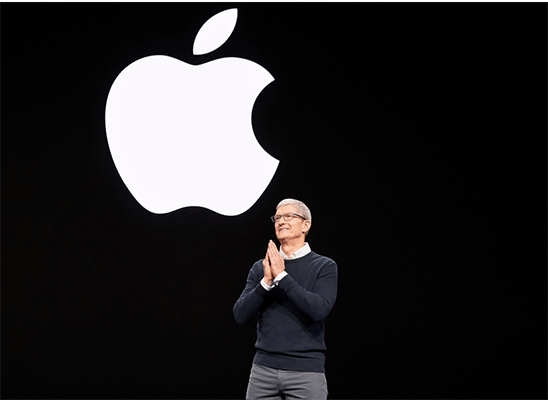
During the launch of an Apple product, millions of people around the globe eagerly wait for the keynote presentation. By leveraging on the strongest emotions of people through teasers and effective keynote speeches, Apple is able to get people excited to the extent of waiting in long lines and sleeping in tents outside the Apple stores.
Creating a hype about your product launches and setting expectations can help you trigger this emotion.
Also, the closed beta campaign concept in B2B marketing is a good example of triggering anticipation. The concept of giving access to users on the date of launch builds curiosity.
Key takeaway: Anticipation is a good emotion that you want your customers to have. This can be achieved through different ways – even through a simple everyday social media post that announces an exciting event, discount, or giveaways.
Joy as an emotional trigger
Sentimental adverts and motivational quotes elicit joy in your customers which makes your brand more likable and helps you connect on a deeper level.
Brands go beyond their ways to make customers feel the emotion of joy for a lasting impact of loyalty, reach, good word-of-mouth, and more.
Here’s an example of Mcdonald’s recent campaign in Quebec, Canada.
A unique tradition that results in people moving to new homes on the same days the residential leases end on the same day every year.
Mcdonald’s evoked joy among people through this creative campaign by encouraging customers to treat themselves with burgers and fries during the hectic moving process.
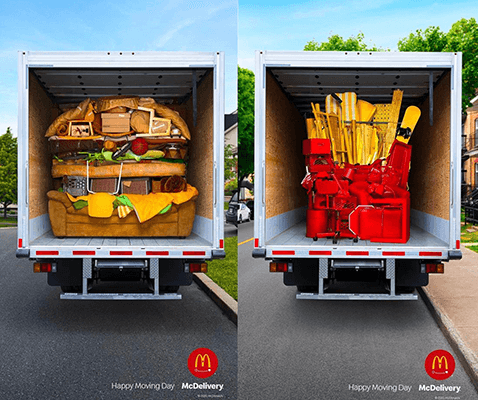
Other than this, any day, a good product that makes the lives of people easier brings joy to them on a day-to-day basis.
Think of how happy and joyful writers felt with the launch of Google docs and Grammarly. They did not have to worry about losing their work with docs on the cloud and skip spell check with Grammarly.
Key takeaway: You have no other go but to make your customers happy as this is fundamental to the very existence of your business. You can evoke joy in your customers through discounts, fun contests, excellent support services, supporting good causes, and more.
Trust as an emotional trigger
Trust is an emotion that all brands want their customers to have on them. It not only helps in acquiring customers but also in retaining them, winning their loyalty, and spreading the word to other potential prospects.
There are different content formats that can aid in creating the trust (which will be discussed in the further sections).
To put it in a simple example, if you visit a page on Facebook that you have not followed, you’ll see how many people like the page and the count of your friends who like the page – which also constitutes trust and social proof. The same Facebook can be taken as an example for the breach of trust when the whole privacy concern fiasco happened.
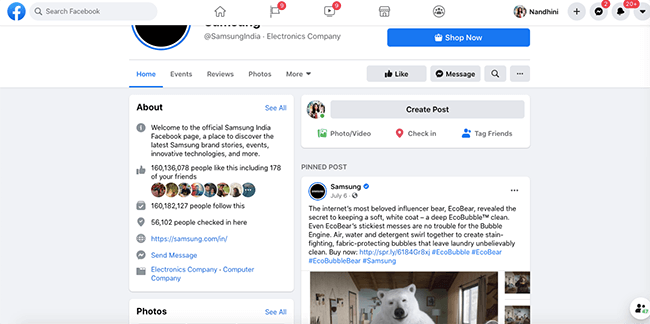
Key takeaway: Brands must thrive to build trust. This is particularly important when customers invest a lot of money or trust you with sensitive and confidential data.
Fear as an emotional trigger
Fear is often seen as a negative emotion that marketers don’t want their customers to have. But, when done right, it can do wonders for your brand and sales. “Stock running low” or ”offer expires soon” are common examples of brands trying to create urgency and fear of losing out inorder to encourage purchases and quick check outs.
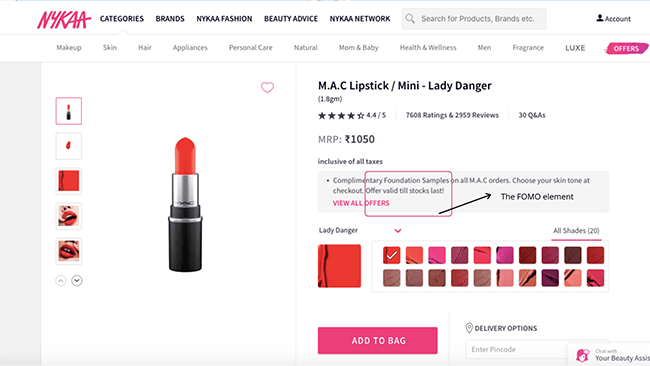
Key takeaway: FOMO is a popular technique used by marketers to create urgency for their products and increase purchases. But, you must be watchful of the context and not go overboard with this emotion.
Surprise as an emotional trigger
People lean in when there are surprises. It makes them feel like the brand cares enough to make them happy.
A good example of evoking surprise in customers would be WestJet.
Back in 2013, WestJet surprised its passengers with their dream Christmas presents. Passengers flying from Toronto and Hamilton International airports were asked about their dream Christmas gift through a virtual Santa Claus. When they arrived in Calgary, gift-wrapped boxes arrived with the dream present inside.
This year, we wanted to turn our holiday campaign into a tradition by doing something that’s never been done before. Inspired by the notion of real-time giving, we wanted to surprise guests with meaningful, personalised gifts when they least expected them.
Richard Bartrem, Vice President, Communications and Community Relations
The video hit more than 12 million views and the proceeds were used for a social cause.
Key takeaway: Evoking surprises need not always be through expensive campaigns. It can be as simple as a social media shoutout thanking an individual, a personalized note, rewarding loyal customers, maybe sending them cookies?
Disgust as an emotional trigger
Disgust is definitely not an emotion that you want your customers to feel about your brand. Making your customers feel disgusted about your product, services, values, and your ideologies can have a lasting impact making it almost irreparable.
Here’s an example of a campaign by Dove that triggered hatred for an insensitive ad for which they apologized later.
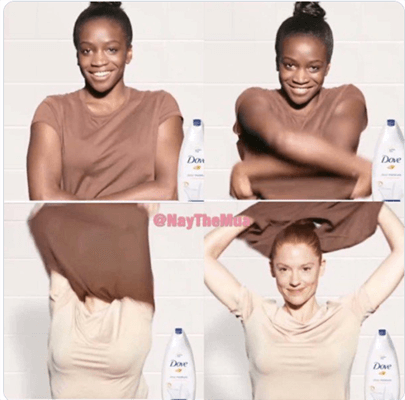
Key takeaway: Always be sensitive to people’s emotions and values. Indulging in political opinions or favoring an ideology that is hated by the masses can trigger disgust. Even if it is among a few customers, it still talks about your insensitivity as a brand.
Sadness as an emotional trigger
Sadness of course is an emotion you do not want your customers to feel. While it can be used in campaigns that are for a social cause, your products, and business campaigns must never evoke this emotion among your customers.
Now, that we have discussed different types of emotions and instances of how they were used in marketing campaigns, let’s now find out how you can infuse these emotions into your campaigns too.
How to infuse emotions into your marketing
1. Use data to understand your customers: Master the art of listening
The data about your customer which could be their names, browsing history, tastes and preferences, and dislikes can be used to your advantage in creating different emotions.
Like in the case of Netflix.
The shows recommended to you by Netflix are carefully analyzed and presented to you based on your viewing patterns, the clicks that you do on certain thumbnail images, and the genres you frequently watch, tastes of similar users, and more. Based on a lot of data crunching, Netflix recommends these shows to us.
In fact, Netflix hyper-personalizes the thumbnail images by making it different from one viewer to another just to make it resonate with their taste.
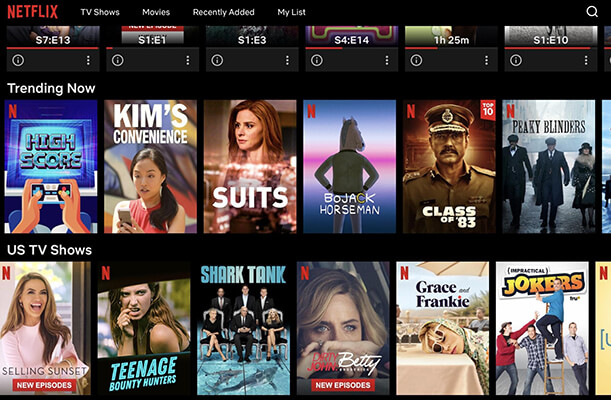
What emotion are they trying to win over here?
They want their customers to feel like they know them (joy) and care enough to handpick the shows that they think they’d enjoy. It’s a win-win.
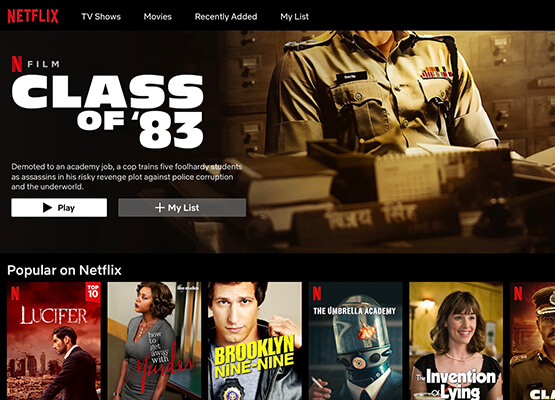
Unlike the Pinterest example we discussed earlier, if used properly, you can achieve desired results by tapping into data. You must also be mindful of privacy violations and have the consent of the customer to use their data for your marketing campaigns. Don’t go overboard with personalizing messages as there is a fine line between making it seem creepy instead of concerned.
2. Visual cues that appeal to different emotions
Color
Colors create strong emotions. If you want your brand to be perceived as warm, cheerful, and happy you can have your websites, brochures, and other marketing collaterals in yellow – like Mailchimp.
If you want your brand to be perceived as trustworthy, professional, and secure, then you may want to go with blue (ex: LinkedIn, Facebook, Paypal, Pepsi, etc.).
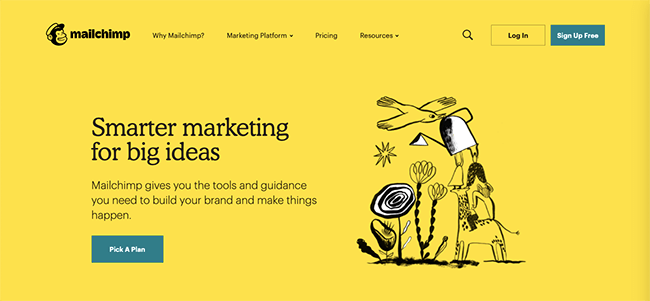
You can use the color wheel to identify the best color for your brand and what emotions you want your audience to perceive.
Images
The fusiform gyrus in our brain is responsible for facial, body, and color recognition. We are highly receptive to images. As a matter of fact, having real images of your C-suite, employees, and customers on your marketing material can evoke the emotion of trust rather than random stock images. But, you don’t have to ignore stock images altogether – just be picky and choose authentic images that align with the story you are trying to tell.

This is a section from the Hubspot website that has a stock image blended with their brand color and a happy face with plenty of white spaces that align with their mission and values.
Other image types and the emotions they evoke:
- Graphic elements – Glossy graphic elements that include vector images, icons, brand logos, etc evoke a sense of cheerfulness.
- Gifs – Depending on the context, gifs can evoke different emotions, but, generally, it is used for light-hearted humor and subtle joy.
- Memes – This is typically used to make your brand seem friendly and relatable through humor as an element.
Create realistic videos
Videos are increasingly becoming the best medium to narrate a story. The best part about videos is that you have different elements – music tracks, voiceovers, scripts, and visuals all of which have immense potential to elicit emotions among the audience.
All the emotions, hacks, and campaign examples that we discussed so far, the majority of campaigns have utilized video as a format to create content and the reason is simple – it is more impactful than anything else.
Visuals are processed 60,000 times faster in the brain than text is. That means you can pack a lot more video content than text because audiences’ can handle the workload.
3. Emotions associated with other content types
Copywriting
Your web copy can induce different types of emotions to your readers. This is why it is important to carefully pick your choice of words.
Unbounce analyzed the behavior of 74,551,421 visitors to 64,284 lead generation landing pages to find what emotions are better for landing page conversions. They found that certain emotional trigger words like fee, loss, limited, and accident did not work well for the travel industry while improve, enjoy, and achieve worked well with the education industry.
Want some emotional trigger words to use in your copy? Check out SmartBlogger’s article on power words.
Social proof
Marketers have been using social proof to build credibility and trust among customers for years now.
Some common social proof content includes:
- Positive reviews
- Awards and recognitions
- Customer testimonials
- Influencer endorsements
- Social media following
- Number of users/customers
- Case studies
- UGC content
This makes your brand more reliable and is a point of conversion.
Podcasts and audiobooks
Podcasts and audiobooks are audio-based content that can elicit different types of emotions.
Unlike text-based content, there’s a real person who’s talking that makes it feel like a real conversation. There’s a tone, there’s humor, breathing of the person that makes it feel so natural and personal.
When you plug in your headphones and listen to audio-based content, you’ll feel the connection more than any other format.
The advantage of free imagination also helps you build more curiosity and creativity.
Conclusion
What kind of TED talk etches a lasting memory? The struggle of a small town author who made it big in the publishing industry or a theoretical knowledge transfer of “how to make it big in the publishing industry”?
Of course the former. We lean in when people draw out personal experiences, it makes us empathize, trust, and motivated. We recollect all the struggles on the story and map it to how it can impact our journey and the steps we need to take. We become more actionable, instantly.
This applies to the business world too.
Adding a component of emotions can unmask the corporate out of you and unleash your human side.
Instead of beefing up your blogs, videos, and presentations with business proposals and benefits of your product, appeal to emotions instead. However, be very careful of what you say and do as going overboard can make your audience sensitive and aggressive.
